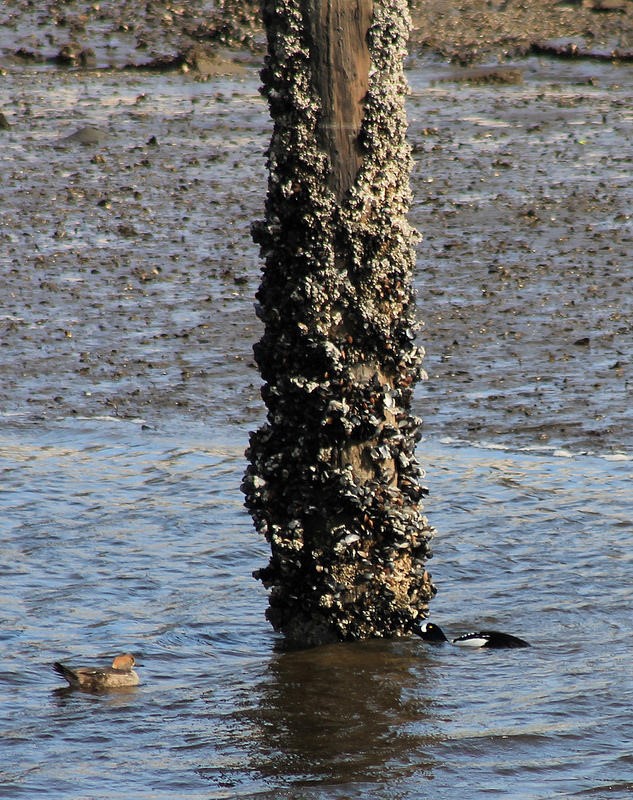Extreme weather events may become the norm as climate change effects are becoming more and more visible. Rain is precious in California, yet greater-than-average rainfall can have an adverse effect on the hardiness of invertebrates and mollusks that live in tidal pools or attach to ships and pier pilings.

In areas where there is constant motion, such as out in the open ocean, the effect is not as noticeable. In the San Francisco Bay, which is really an estuary, there is a visible effect. In Aquatic Park, you can try a little experiment and look at the still water near our ships and small boats. The water appears very clear near the top. That is fresh water, floating right on top of the salt water, because the salt water is denser. This is an interesting visible phenomenon, but it is detrimental to the organisms that depend on a set range of salinity to survive.
Let’s consider the mussels, which attach to the sides of our docks by their byssus threads. Mussels are known as filter feeders, which mean they passively filter the phytoplankton and zooplankton out of the water with their gills for sustenance. In order to survive, phytoplankton and zooplankton must be in water with a salinity of approximately 35 parts of salt per million (35 ppm).
Plankton flourishes near the surface in waters where the salinity level is 35 ppm. However, in seasons with an excess of rainfall, plankton must move further below the surface to reach adequate salinity levels. This means that mussels attached near the surface are not able to get adequate food. If this goes on for a few days, the mussels could starve.
Given time, however, freshwater gets mixed up with the salt water through the action of the currents, wind and waves, and the mussels are all happy again because it brings the salinity and the mussels’ food back to the surface.
We have learned how fresh water levels affect mussels in our local ecosystem. We know that mussels are a food and income source for many people, and phytoplankton and zooplankton are the basis of the marine food chain. If we consider that there is actually more fresh water tied up in glaciers and polar ice caps than water in the ocean, what happens if polar ice sheets start to melt along with the glaciers? What will happen to all the organisms living in the sea?
Just food for thought!
